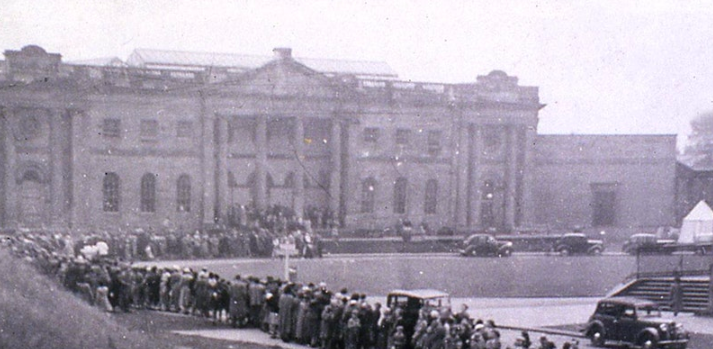
‘We already know we’re a museum which is loved. But the Castle Gateway project has helped us see it not just about us being a fantastic museum, it’s about how we can play a part in creating a place’ (Reyahn King, Chief Executive, York Museums Trust).
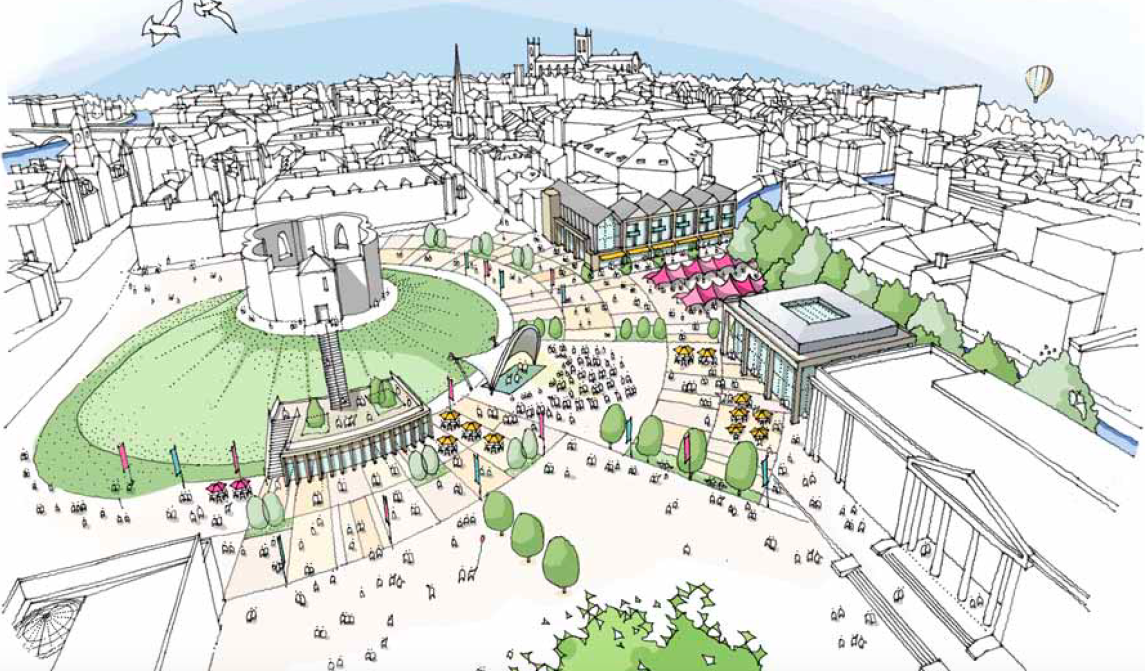
Last week we released the vision for the new public spaces for the Castle and Eye of York area. In sharing these ideas and the illustrations, we were very keen to emphasis the process that has taken us to this point (what people said mattered to them and what they wanted to be able to do in the area) and what issues the interventions are seeking to address. We also wanted to make clear that the masterplan is not the end of the My Castle Gateway open conversations. Each of the proposed public spaces, connections and buildings will need more detailed discussion and collaborative briefing. Two of the buildings you can see on the plans relate to York Castle Museum. To tell the story of how those ideas for new buildings emerged and to signal how people can get involved in the next steps, I caught up with Reyahn King, Chief Executive York Museums Trust.
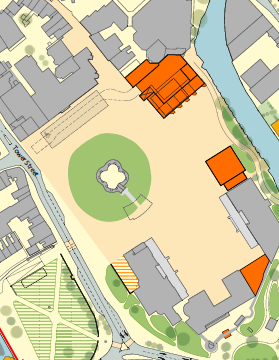
I asked Reyahn how the vision for the Castle Museum is developing and how the ideas for new buildings and paths might link and flow with the other masterplan ideas for the areas around the museum.
‘We started with a problem which is that our link building – the current main entrance – isn’t fit for purpose for a 21st century museum. It is cramped, wheelchairs and prams can’t access a whole wing, the café is not big enough, there is nowhere for people to leave their prams and on a busy day people have to wait outside, rather than inside in the warm and dry. There are numerous problems with it. We have here a Grade 1 listed 18th century building which has been in permanent use. We spend more than £100,000 a year on maintenance but it needs a thorough conservation job which will be most easily achieved through a bigger development project.
So those are the problems. But when we started to think about the museum project in more detail, it became not so much a project to solve a problem. It became an exciting project in itself.
We know the Castle Museum is loved. We are regularly in the top three visits in York. We know people from across Yorkshire people come back again and again. We have nationally important collections and Kirkgate Victorian Street is loved; we want to build on both in the future.
But we also know that people come in and say ‘where is the castle?’ They are confused about why it’s called York Castle Museum. But actually – though not many people currently do this – if you walk through the museum and out into the courtyard, into the back part of the grounds and turn around then there’s a great big bit of castle walls there. And, when we started to look at the history of the site, it was just so rich. It was a place that had a profound impact on people’s lives. Things that happened here are part of our national story. Decisions made here have had an international impact, not least the numbers of people sent to Australia from this site. We tell the story a bit in our Prison experience, but we want to do more.
So we need to do these three things: create 21st century facilities; position the museum as the national collection of everyday life; tell the stories of the site itself: of ordinary people who had extraordinary things happen to them here and of ordinary, everyday objects held in this the place of extraordinary power. The fourth thing is that we want the Eye of York and the Foss riverside to be a destination in its own right for residents and visitors. So it not just about us being a museum, it’s about how we can play a part in creating a place.
My original idea for a solution to our fourth objective was an iconic architectural intervention. But it has become clear through the My Castle Gateway process that people want to see the Foss, they want to sit, enjoy the views, have a space to think, reflect and remember, access the River easily and freely. As a result what I’m thinking of now is an architectural and landscape intervention that enables more porosity from Foss Basin into the Eye of York. Our understanding of our role has really emerged from what people has been saying about the site, it has been a fantastic process to be on the edges of and has really shaped our thinking.
So one of the very exciting things we might want to do is open up the southern gateway – it will be interpretively powerful to walk through one of the entrances to the castle. And we definitely want to open up the riverside space at the back where Raindale Mill is and enable the walk ways along the Foss walk many people want (link to images of post its).
Simmilary, when we started thinking about our development, we weren’t sure whether people wanted to hear the stories of the site. But we’ve really picked up people’s interest in the layers of history and making sense of York Castle. Many people want to see our collections but the new aspect to the development will be much greater recognition that we’re also very much a heritage site’.
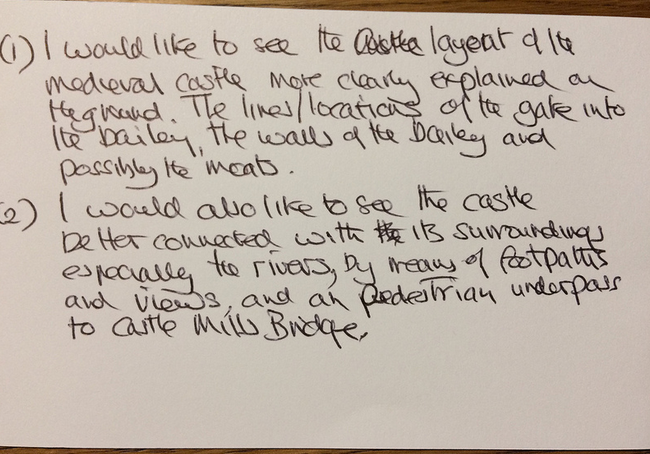
We then went on to discuss the building visible on the illustration at the end of Female Prison.
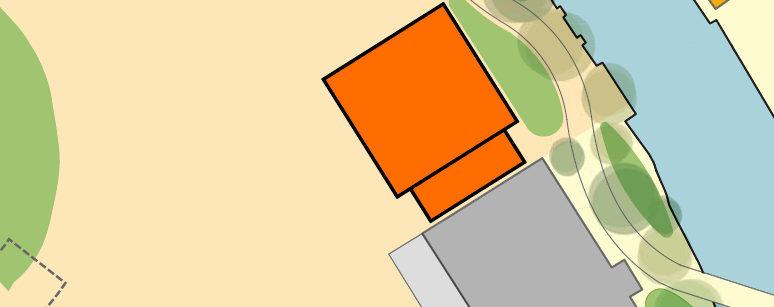
‘The first thing to say is that these buildings are really indicative. We don’t actually have any specific plans at the moment. It might be square building at the end but might be radically different from that. But to go back to the problems that we might need a building intervention to address. We have a problem with visitor flow. A new entrance at this end of the site would mean that we could have people coming in one way and out another, it opens up our options.
But there are two other motivations for doing something there too. The wall at the end of the Female Prison is a really important wall. It’s got the last drop in it. It was the last place anyone was executed in York. It is historically important and a crucial story for us to tell. It is also (appropriately) gloomy and a bit of an eyesore if you don’t know the story of the site. We would like to explore how we might bring the wall inside another building so that we can both interpret better the highly significant story of changing approaches to justice and punishment as well as lessen the negative visual impact on the surrounding area.
So there is an indicative building on the illustration and the plan. But we’re not sure what it needs to be yet. Responding to what people said they’d like, we’re thinking of it currently as having civic space with possibly a temporary exhibitions space, café and places to sit and look out over the Foss. But what we want to do ultimately is set how a brief for the architects and say ‘this is what we and the people of York want to achieve – can you help us?’ But we’re not as far along as having appointed architects yet’.
We ended by discussing the next steps for York Castle Museum.
‘We are currently in the early stages of developing an application to go to the Heritage Lottery Fund. We’re planning to submit it in December 2019. We’ve given ourselves lots of time because we want to explore these questions further with people. We’re really keen to hear from people and organisations who’d like to get involved in shaping the museum. My colleague Helen Langwick (details below) is keeping a list of people, so do email her or give her a ring if you’d like to get involved’.
To get involved in discussions about the future of the York Caste Museum contact:
Helen Langwick
York Castle Museum Interpretation and Content Manager
Email:Helen.Langwick@ymt.org.uk
Phone: 01904 687687